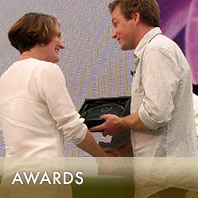Slugs!
Slugs are the bane of many a gardener’s life, but did you know that not all slugs are the same and some can even be a gardener’s best friend? It’s a bit of a sweeping generalisation, but typically it’s the smaller varieties of slugs that do the damage to our plants, whilst the larger varieties actually feed mainly on decomposing organic matter such as dead leaves, dung and even dead slugs, and are a valuable part of the composting process.
Those that do harm our plants though can do huge damage using their rasping tongues to eat leaves, stems, buds, roots and bulbs. They feed mainly at night and damage is most severe during warm humid periods. Nothing can totally eradicate the problem as they are so widespread, but there are measures that can be taken. One of the common ones has been the use of slug pellets, one type of which is soon to be banned. So what can still be done?
In my experience the most effective control is a biological control called Nemaslug, which introduces tiny nematodes which infect slugs with bacteria that kills them, but with no adverse effect on other organisms. Although very effective when applied exactly according to the instructions, it is however very dependent on having just the right conditions for the survival of the nematodes. In particular they need a moist warm soil and won’t survive long enough to be effective if the soil dries out.
Picking slugs off by hand in the evening and then disposing of them is more effective than you might think. But be warned – don’t throw them over the neighbour’s fence as they do have a homing instinct! They can be taken to waste ground well away from any gardens, or put in the freezer to be killed then added to the compost. Traps such as beer traps or half citrus skins can be used and emptied regularly.
Encouraging predators is worthwhile for so many reasons. Their predators include hedgehogs, frogs, toads, birds and ground beetles. Raking dead leaves away in winter will expose their eggs to be eaten by birds.
Barriers can sometimes help, but at other times seem totally ineffective. These include rough or sharp mulches (grit, broken shells, etc), strong smelling or distasteful mulches (coffee grindings), copper barriers, etc. I tried wool pellets and the first time I used them they were incredibly effective, but then the next bag I tried had no effect. I’m not sure if maybe the wool, being a natural product, has varied between batches, or whether it was the time of year, type of plant or some other variable.
As far as chemical controls, i.e. pesticides, go there are 2 main types of slug pellet. Ferric phosphate based pellets are approved for organic use and include Growing Success Advanced Slug Killer and Sluggo Slug & Snail Killer. Metaldehyde based pellets will be banned from Spring 2020, as announced by DEFRA in December 2018, as they have been determined to pose an “unacceptable risk to birds and mammals”. These include Doff Slug Killer Blue Mini Pellets and Ultimate Slug and Snail Killer, and hopefully such products will become unavailable well before Spring 2020.
It’s worth bearing in mind that most healthy plants, once established, will tolerate some slug damage and control measures aren’t really needed.
This post was written by Christine Whatley on February 28, 2019 2:47 pm







